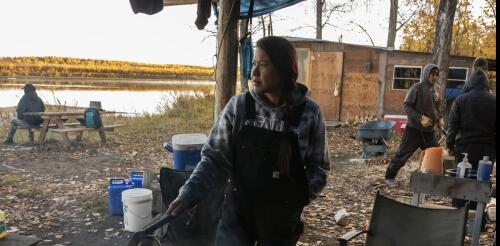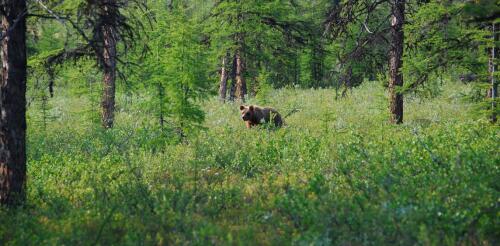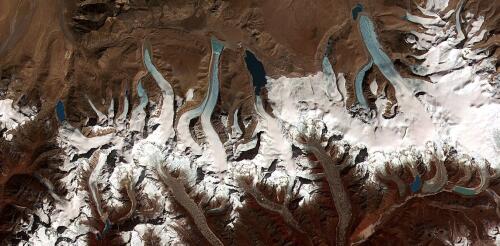Alaska
Ultimately, the U.S. government limited fossil fuel development on a large chunk of federal lands in Alaska.Future oil and gas drilling will be in particular prohibited in over 5 million hectares of the Alaska National Petroleum Reserve, the largest expanse of public land in the nation.The measure is part of a broader Biden administration plan to protect sensitive ecosystems and wildlife.A move that is certainly also, and perhaps above all, political.The decision, with a nod to the key electorate of young people sensitive to ecological issues, comes not by chance as the engines of the presidential campaign heat up.In any case, good news for the Arctic.At the same time, the US Interior also announced that it will block the construction of a controversial road infrastructure, crucial for the operation of a copper and zinc mine in northern Alaska but of high impact on indigenous communities and wildlife habitats.Both decisions pose several political and legal risks for the Democratic admi...
The year 2023 shattered the record for the warmest summer in the Arctic, and people and ecosystems across the region felt the impact. Wildfires forced evacuations across Canada. Greenland was so warm that a research station at the ice sheet summit recorded melting in late June, only its fifth melting event on record. Sea surface temperatures in the Barents, Kara, Laptev and Beaufort seas were 9 to 12 degrees Fahrenheit (5 to 7 degrees Celsius) above normal in August. While reliable instrument measurements go back only to around 1900, it’s almost certain this was the Arctic’s hottest summer in centuries. Summer heat extremes in 2023 and over time. NOAA, Arctic Report Card 2023 The year started out unusually wet, and snow accumulation during the winter of 2022-23 was above average across much the Arctic. But by May, high spring temperatures had left the North American snowpack at a recor...
Earth’s boreal forests circle our planet’s far northern reaches, just south of the Arctic’s treeless tundra. If the planet wears an Arctic ice cap, then the boreal forests are a loose-knit headband wrapped around its ears, covering large portions of Alaska, Canada, Scandinavia and Siberia. The boreal region’s soils have long buffered the planet against warming by storing huge quantities of carbon and keeping it out of the atmosphere. Its remoteness has historically protected its forests and wetlands from extensive human impact. These two traits rank boreal forests among the most important ecosystems on Earth. In addition, numerous species of mammals, fish, plants, insects and birds make these forests home. For over two centuries, scientists have recognized that climate plays a key role in determining the geographic zones of plant communities. Because boreal forests and soils face subzero winters and short summers, these forests and the animals that li...
In August 2023, residents of Juneau, Alaska, watched as the Mendenhall River swelled to historic levels in a matter of hours. The rushing water undercut the riverbank and swallowed whole stands of trees and multiple buildings. The source for the flood was not heavy rainfall – it was a small glacial lake located in a side valley next to the Mendenhall Glacier. Glacier-dammed lakes like this are abundant in Alaska. They form when a side valley loses its ice faster than the main valley, leaving an ice-free basin that can fill with water. These lakes may remain stable for years, but often they reach a tipping point, when high water pressure opens a channel underneath the glacier. The rapid and catastrophic drainage of lake water that follows is called a glacial lake outburst flood, or GLOF for short. The flood waters race downstream over hours or days and often hit unexpectedly. Suicide Basin, a glacier-dammed lake, has flooded the Mendenhall River...
Open Access Government takes a closer look at the hydrology and surficial geology in Alaska to illustrate the broader picture of geology in the region, primarily focusing on Permafrost and Periglacial Studies From reporting on oil and mineral finds to helping in the aftermath of deadly mudslides, the Division of Geological & Geophysical Surveys (DGGS) in Alaska staff tirelessly put effort into growing the economy and safeguarding their communities. Investing in geology is essential for commercializing and discovering Alaska’s untapped gas, oil, coal, and mineral resources and preventing geologic risks to Alaskans. Under the banner of the Director’s Office, the DGGS consists of five sections: the Geologic Materials Center and the Alaska Geospatial Office. The Director’s Office oversees strategic planning for the Division’s programs to ensure DGGS serves the community’s needs, oversees the Division’s financi...




